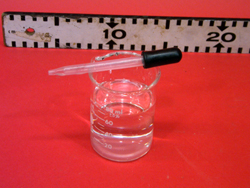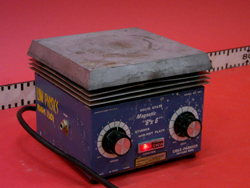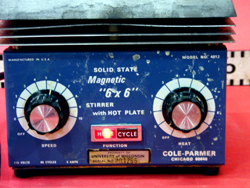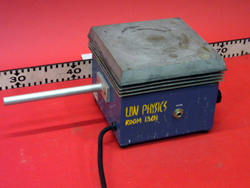|
Size: 3023
Comment:
|
← Revision 4 as of 2013-07-12 18:17:34 ⇥
Size: 3067
Comment: converted to 1.6 markup
|
| Deletions are marked like this. | Additions are marked like this. |
| Line 2: | Line 2: |
| ||<:30%>[:PiraScheme#Thermodynamics: Table of Thermodynamics Demonstration]||<:30%>[:TDEquipmentList: Thermodynamics Equipment List]||<:30%>[:Demonstrations:Lecture Demonstrations]|| | ||<:30%>[[PiraScheme#Thermodynamics| Table of Thermodynamics Demonstration]]||<:30%>[[TDEquipmentList| Thermodynamics Equipment List]]||<:30%>[[Demonstrations|Lecture Demonstrations]]|| |
| Line 7: | Line 7: |
| Heat and the First Law, [:FirstLaw#HeatTransferApp: 4B50. Heat Transfer Applications] | Heat and the First Law, [[FirstLaw#HeatTransferApp| 4B50. Heat Transfer Applications]] |
| Line 10: | Line 10: |
| * '''Cabinet:''' [:ThermoCabinet:Thermodynamics (TD)] * '''Bay:''' [:ThermoCabinetBayA1:(A1)]?? |
* '''Cabinet:''' [[ThermoCabinet|Thermodynamics (TD)]] * '''Bay:''' [[ThermoCabinetBayA1|(A1)]]?? |
| Line 14: | Line 14: |
| attachment:LeydenfrostPhenomenon01-400.jpg | {{attachment:LeydenfrostPhenomenon01-400.jpg}} |
| Line 22: | Line 22: |
| ||Dropper||[:ThermoCabinetBayB1: TD, Bay B1, Shelf #2]??|| || ||0.5 L liquid nitrogen||[:ThermoCabinetBayB1: TD, Bay B1, Shelf #2]??|| || ||Hotplate||[:ThermoCabinetBayA5: TD, Bay A5, Shelf #2]??|| || |
||Dropper||[[ThermoCabinetBayB1| TD, Bay B1, Shelf #2]]??|| || ||0.5 L liquid nitrogen||[[ThermoCabinetBayB1| TD, Bay B1, Shelf #2]]??|| || ||Hotplate||[[ThermoCabinetBayA5| TD, Bay A5, Shelf #2]]??|| || |
| Line 46: | Line 46: |
| ||attachment:LeydenfrostPhenomenon02-250.jpg||attachment:LeydenfrostPhenomenon03-250.jpg||attachment:LeydenfrostPhenomenon04-250.jpg||attachment:LeydenfrostPhenomenon05-250.jpg|| ||attachment:LeydenfrostPhenomenon08-250.jpg||attachment:LeydenfrostPhenomenon09-250.jpg|| |
||{{attachment:LeydenfrostPhenomenon02-250.jpg}}||{{attachment:LeydenfrostPhenomenon03-250.jpg}}||{{attachment:LeydenfrostPhenomenon04-250.jpg}}||{{attachment:LeydenfrostPhenomenon05-250.jpg}}|| ||{{attachment:LeydenfrostPhenomenon08-250.jpg}}||{{attachment:LeydenfrostPhenomenon09-250.jpg}}|| |
| Line 50: | Line 50: |
| * [https://www.youtube.com/user/LectureDemostrations/videos?view=1 Lecture Demonstration's Youtube Channel] | * [[https://www.youtube.com/user/LectureDemostrations/videos?view=1|Lecture Demonstration's Youtube Channel]] |
| Line 54: | Line 54: |
| * [https://en.wikipedia.org/wiki/Phase_transition Wikipedia -Phase Transition] | * [[https://en.wikipedia.org/wiki/Phase_transition|Wikipedia -Phase Transition]] |
| Line 56: | Line 56: |
| * [https://en.wikipedia.org/wiki/Leidenfrost_effect Wikipedia - Leidenfrost Effect] | * [[https://en.wikipedia.org/wiki/Leidenfrost_effect|Wikipedia - Leidenfrost Effect]] |
| Line 59: | Line 59: |
| [:Instructional:Home] | [[Instructional|Home]] |
Leydenfrost Phenomenon, 4B50.30
Topic and Concept:
Heat and the First Law, 4B50. Heat Transfer Applications
Location:
Cabinet: Thermodynamics (TD)
Bay: (A1)??
Shelf: #1,2,3.. ??
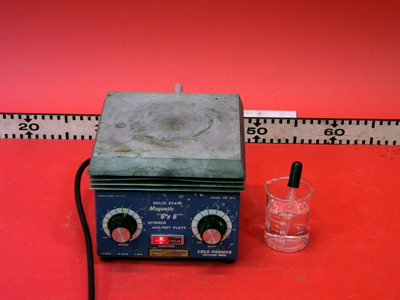
Abstract:
Drop water on a hot plate and liquid nitrogen on the lecture table.
Equipment |
Location |
ID Number |
|
|
|
Dropper |
|
|
0.5 L liquid nitrogen |
|
|
Hotplate |
|
|
250 mL beaker of water |
Above the sink in the lecture demo room |
|
Important Setup Notes:
This demonstration requires about 250 mL - 500 mL of liquid nitrogen.
Setup and Procedure:
- Plug in the hotplate and turn in on. It takes a few minutes to heat up.
- Using the dropper, drop several drops on the hotplate.
- Pour the liquid nitrogen on the table top and compare the behavior of the two fluids.
Cautions, Warnings, or Safety Concerns:
- Exercise caution throughout this demonstration. The hotplate can cause BURNS, and the liquid nitrogen can cause SEVERE FROSTBITE!
Discussion:
When our two liquids come into thermal contact with surfaces at temperatures significantly higher than the boiling point of the liquid, we notice that little droplets form. These droplets seem to skid across the surface. When the liquid comes into contact with the surface, some heat is transferred from the surface to the bottommost portion of the droplets. This causes this portion of the drop to transition to a gas forming a boundary between the surface and remaining liquid. The gas is much closer in temperature to the boiling point of the liquid causing the liquid to boil off significantly slower than if it was constantly in contact with the surface. In essence, this is the Leydenfrost phenomenon in action.
Videos:
References:
